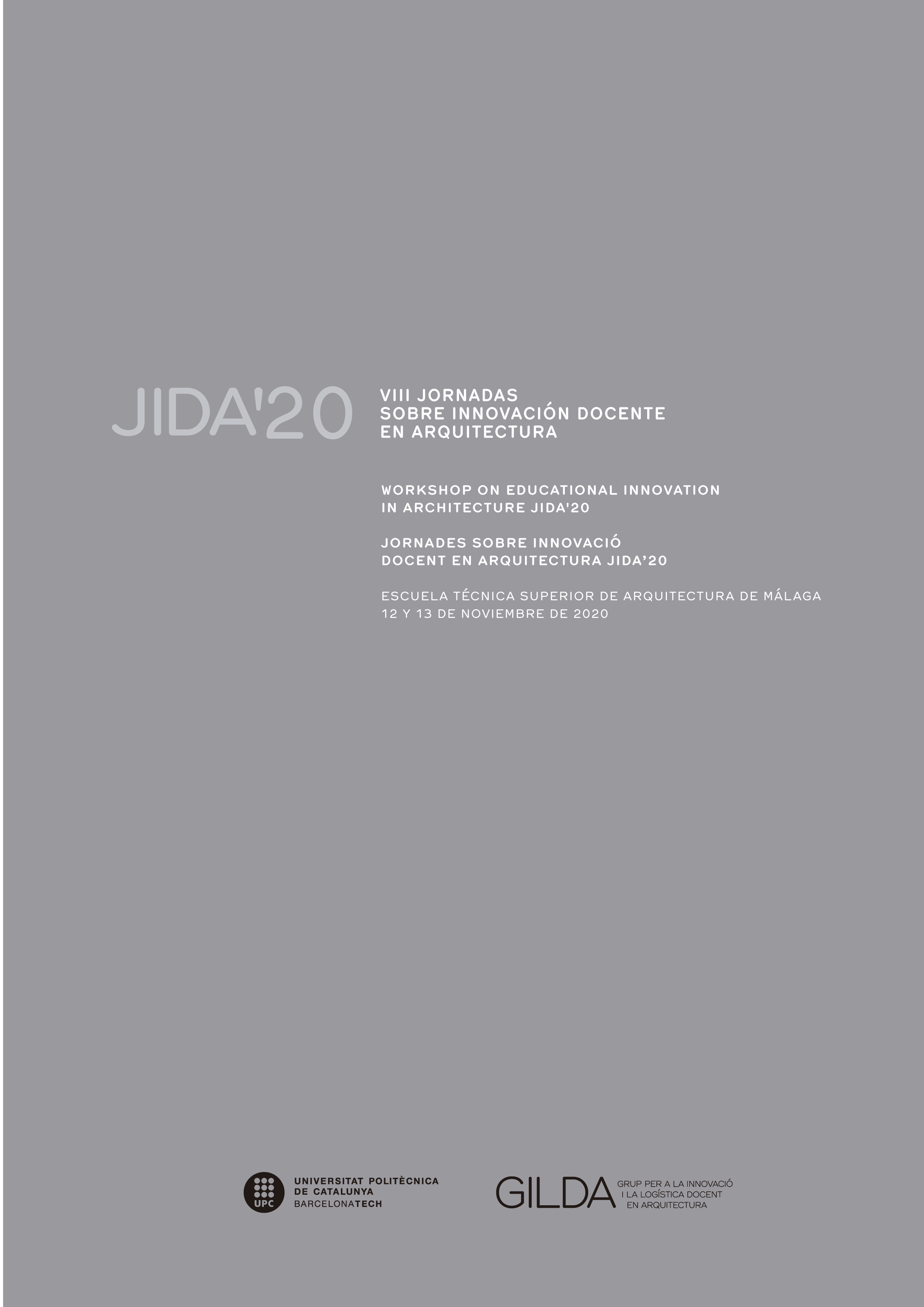Teaching Architecture from a compositive and typological understanding
DOI:
https://doi.org/10.5821/jida.2020.9370Abstract
The teaching experience of History of Architecture 2 at the University of Malaga focuses on the development of analytical, formal and compositional aspects. The teaching structure is based on the form-composition and imitation-abstraction binomials, leading to the use of the concept of architectural type, which allows us to understand the specificities of each solution carried out and its evolution, as well as the ultimate meanings of the experiments carried out during the historical period analyzed. In this way the student receives an explanation about the reason for the meaning and evolution of the main compositional typologies, as well as about various aspects related to the architectural form, and the anomalies and contrasts present in the selected works. From the experience of this teaching innovation, a broader reflection on architectural composition, the importance of the ability to look, and the necessary intersection between theory and practice is reached.References
CIMADOMO, G. (2014). “Teaching History of Architecture. Moving from a knowledge transfer to a multy-participative methodology based on IT toolsâ€. Journal of Learning Design, 7(2), pp. 79–90. <https://doi.org/10.5204/jld.v7i3.178>
CIMADOMO, G. (2017). “Design as a tool in the module History of Architecture. Learning by doing†En Proceedings of ICERI 2017 Conference. Sevilla. 7269–7275. <http://10.21125/iceri.2017.1945>
DE PRADA, M. (2008). Arte y composición. El problema de la forma en el arte y la arquitectura. Buenos Aires: Nobuko.
DUNNE, A.; RABY, F. (2013). Speculative everything. Cambridge, MA: MIT Press.
GARDELLA, I. (2009). Conferencia en Barcelona. DPA: Documents de Projectes d’Arquitectura, (25), 6–11.
HERREROS, J. (2019). Textos crÃticos. Madrid: Ediciones Asimétrica.
MARTà ARÃS, C. (2014). Las variaciones de la identidad. Ensayo sobre el tipo en arquitectura. Barcelona: Fundación Caja de Arquitectos.
MARTà ARÃS, C. (2005). La cimbra y el arco. Barcelona: Fundación Caja de Arquitectos.
MARTÃN HERNÃNDEZ, M. (1984). La tipologÃa en arquitectura. Las Palmas de Gran Canaria: Universidad de Las Palmas de Gran Canaria.
MATTA, A. (2018). Gardella/il trasmettere: il metodo didattico. FAMagazine, (44), 51–56. https://doi.org/10.1283/fam/issn2039-0491/n44-2018/203 [Consulta: 15 de junio de 2020]
MONEO, R. (1978). On Typology. Oppositions, (13). 22–45.
MONTANER, J. M. (1999). Arquitectura y crÃtica. Barcelona: Gustavo Gili.
MORENO MANSILLA, L. (2002). Apuntes de viaje al interior del tiempo. Barcelona: Fundación Caja de Arquitectos.
PAMUK, O. (2009). El museo de la inocencia. Barcelona: Mondadori.
PEVSNER, N. (1976). A history of Building Types. Princeton: Princeton University Press.
ROWE, C. (1999). “Las matemáticas de la vivienda idealâ€. En Manierismo y arquitectura moderna y otros ensayos (pp. 9–34). Barcelona: Gustavo Gili.
TORRES NADAL, J. M. (2019). Arquitectura in-dependiente. Alicante: Publicacions Universitat Alacant.
WITTKOWER, R. (1995). Los fundamentos de la arquitectura en la edad del humanismo. Madrid: Alianza.
ZEVI, B. (1952). “La historia como instrumento de sÃntesis de la enseñanza de la Arquitecturaâ€. En 2 Conferencias (pp. 5–25). Buenos Aires: Ninisterio de Educación, Universidad de Buenos Aires, Facultad de Arquitectura y Urbanismo.






















